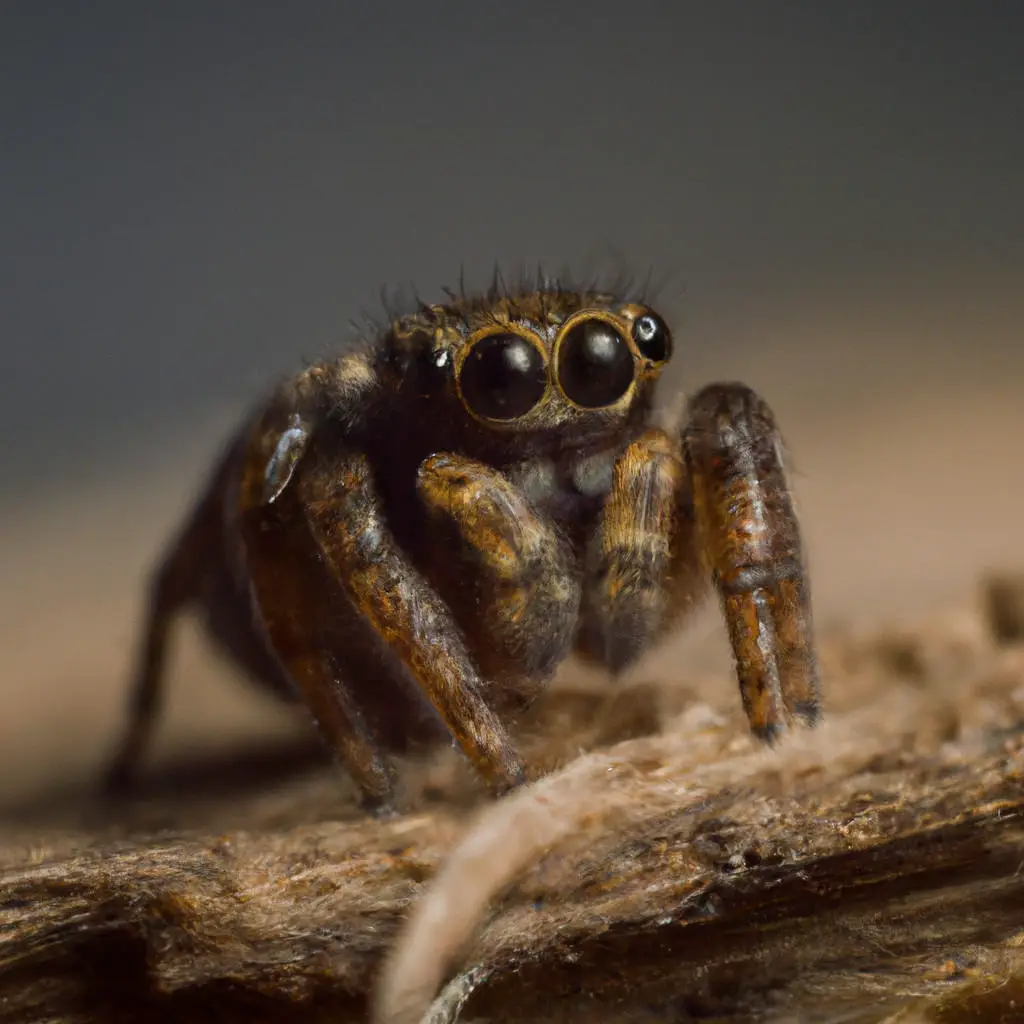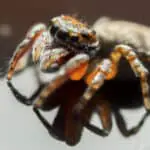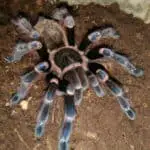Jumping spiders are fascinating creatures that are popular among spider enthusiasts. They are known for their incredible jumping ability and unique personalities. If you are considering keeping a jumping spider as a pet, it is important to understand their dietary needs. In this article, I will share with you what to feed jumping spiders and how to keep them healthy and happy.
Understanding the feeding habits of jumping spiders is essential for their care. Jumping spiders are carnivorous and primarily feed on small insects such as flies, crickets, moths, and beetles. They are also known to eat other spiders, including members of their own species, and occasionally even larger prey such as grasshoppers or caterpillars. Providing a varied diet is important to ensure that your jumping spider receives all the nutrients it needs.
Feeding jumping spiders in captivity can be a fun and rewarding experience. However, it is important to do it correctly to ensure the health of your pet. In this article, we will cover the basics of feeding jumping spiders and provide some tips and tricks to make the process easier. So, let’s get started!
Key Takeaways
- Jumping spiders are carnivorous and feed primarily on small insects such as flies, crickets, moths, and beetles.
- Providing a varied diet is important to ensure that your jumping spider receives all the nutrients it needs.
- Feeding jumping spiders in captivity requires proper knowledge and care to ensure the health of your pet.

Understanding Jumping Spiders
Jumping spiders are fascinating little creatures that are known for their incredible jumping ability and unique hunting methods. As a spider owner, it’s important to understand the behavior and health of your jumping spider to ensure they are happy and healthy.
Jumping Spider Behavior
Jumping spiders are active hunters that rely on their excellent eyesight to locate and capture prey. They are curious and intelligent spiders that are known for their acrobatic movements and impressive jumping ability. Jumping spiders are also social creatures that enjoy interacting with their owners and other spiders.
Jumping Spider Health
As with any pet, it’s important to monitor the health of your jumping spider. One of the most important aspects of jumping spider health is their molting process. Jumping spiders will molt several times throughout their lifespan, and it’s important to provide them with a suitable environment and diet during this time to ensure they molt successfully.
Jumping spiders can also experience weight loss and other health issues if they are not provided with a suitable environment and diet. It’s important to provide your jumping spider with live prey and a suitable habitat to ensure they remain healthy and happy.
In conclusion, understanding the behavior and health of your jumping spider is essential for their well-being. By providing them with a suitable environment and diet, you can ensure that your jumping spider remains healthy and happy for years to come.
Feeding Basics for Jumping Spiders
As a spider enthusiast, one of the most important things to consider is the diet of your jumping spider. Feeding your spider the right food is vital to their health and well-being. In this section, I will discuss the dietary needs and feeding frequency of jumping spiders.
Dietary Needs
Jumping spiders are carnivorous and require a high protein diet to thrive. They feed primarily on small insects such as flies, crickets, moths, beetles, and even other spiders. It is essential to provide live prey as they are agile hunters and enjoy hunting their food.
To ensure that your jumping spider gets a varied diet, it is recommended to feed them a combination of different insects. This will provide them with a range of nutritional content and nutritional value that they need to stay healthy. You can purchase feeder insects online or in pet stores.
Feeding Frequency
The feeding frequency of jumping spiders depends on their age and size. Juvenile spiders eat more frequently than older spiders. In general, most owners feed their jumping spiders every two to three days, while juveniles may require feeding once every one to two days.
It is important not to overfeed your jumping spider as this can lead to obesity and health problems. It is also important not to underfeed them as this can lead to malnutrition and stunted growth.
In conclusion, feeding your jumping spider a healthy and varied diet is essential to their health and well-being. By providing them with live prey and feeding them at the right frequency, you can ensure that they thrive and live a long and healthy life.
Types of Prey for Jumping Spiders
Jumping spiders are known for being carnivorous and hunting down their prey. They are capable of catching insects and arthropods that are much larger than them. As a pet owner, it is important to provide your jumping spider with a balanced diet to ensure its health and well-being. Here are some types of prey that jumping spiders eat:
Insects and Arthropods
Jumping spiders eat a variety of insects, including flies, moths, beetles, and aphids. These insects are commonly found in their natural habitat and provide a good source of protein. Jumping spiders are also capable of catching and eating larger arthropods such as grasshoppers and crickets.
Worms and Larvae
Jumping spiders can also eat worms and larvae. Mealworms and wax worms are popular choices for pet owners to feed their jumping spiders. These worms are soft-bodied and small, making them easy for jumping spiders to digest. They are also high in fat, which can be beneficial for your spider, especially during or after molting when they need extra energy.
Other Spiders and Prey
Jumping spiders are known to eat other spiders, including members of their own species. They also occasionally eat larger prey such as grasshoppers or caterpillars. Providing live prey for your jumping spider is essential for its health and well-being.
It is important to note that uneaten prey should be removed from your jumping spider’s enclosure to prevent it from rotting and causing health issues for your pet. Baby jumping spiders require smaller prey than adult jumping spiders, so make sure to adjust their diet accordingly.
In summary, jumping spiders are carnivorous and require live prey to thrive. Providing a balanced diet of insects, worms, and other prey is essential for their health and well-being.
Feeding Jumping Spiders in Captivity
Feeding a jumping spider in captivity can be a fun and rewarding experience. However, it is essential to provide them with the right type of food to ensure their health and well-being. In this section, I will provide you with some tips on how to feed your pet jumping spider.
Choosing Feeders
Jumping spiders are carnivorous and feed primarily on small insects. Some of the best feeder insects for jumping spiders include crickets, pinhead crickets, fruit flies, house flies, green bottle flies, and dubia roaches. When choosing feeder insects, consider the size and age of your jumping spider. Very young spiders can eat fruit flies before moving on to larger insects as they grow.
Avoiding Pesticides
It is essential to avoid using pesticides when feeding your jumping spider. Pesticides can be harmful to your spider and can even kill them. It is best to purchase feeder insects from a reputable pet shop or online store that guarantees their insects are free from pesticides.
Handling and Interaction
While feeding your jumping spider, it is best to avoid handling them. Jumping spiders are delicate creatures, and handling them can cause stress and even harm them. Instead, place the feeder insects in their enclosure and allow them to hunt on their own. Watching them hunt can be a fascinating experience and can provide them with the necessary exercise.
In summary, feeding your jumping spider in captivity is relatively easy. Provide them with a variety of feeder insects, avoid using pesticides, and allow them to hunt on their own. With these tips, you can ensure your pet jumping spider is healthy and happy.
Special Considerations for Baby and Juvenile Jumping Spiders
As with any young animal, baby and juvenile jumping spiders require special consideration when it comes to their diet and feeding habits. In this section, I will discuss some important factors to keep in mind when feeding your young jumping spiders.
Dietary Adjustments
It is important to note that while adult jumping spiders can eat a variety of feeder insects, baby and juvenile jumping spiders have more specific dietary needs. They require a diet that is high in protein and fat to support their rapid growth and development.
When selecting feeder insects for your baby and juvenile jumping spiders, it is best to choose small insects that are easy for them to catch and digest. Some good options include fruit flies, pinhead crickets, and small mealworms.
Feeding Frequency Adjustments
Young jumping spiders have a higher metabolism than adults, which means they need to eat more frequently. While adult jumping spiders can go several days between meals, baby and juvenile jumping spiders should be fed every day or every other day.
It is important to monitor your young jumping spiders’ feeding habits to ensure that they are getting enough to eat. If you notice that they are not eating or are losing weight, you may need to adjust their feeding schedule or try offering different feeder insects.
In conclusion, feeding baby and juvenile jumping spiders requires some special considerations. By providing them with a diet that is high in protein and fat and feeding them more frequently, you can help ensure that they grow up healthy and strong.
Other Dietary Factors for Jumping Spiders
Jumping spiders are primarily carnivorous, but they also have some other dietary needs. In this section, I will cover some of the other dietary factors that are important for the health of your jumping spider.
Plant and Nectar Consumption
While jumping spiders are mainly carnivorous, some species have been observed consuming plant material such as pollen and nectar. However, this is not a common occurrence and should not be relied upon as a primary food source. If you want to provide your jumping spider with some plant material, you can offer small amounts of fresh fruits or vegetables.
Water Needs
Like all living creatures, jumping spiders need water to survive. However, they do not drink water in the same way that we do. Instead, they get their water from their prey. It is important to ensure that your jumping spider has access to fresh water by misting their enclosure or providing a shallow dish of water.
In conclusion, while jumping spiders are primarily carnivorous, they do have some additional dietary needs. Providing your jumping spider with a varied diet that includes live prey, small amounts of fresh fruits or vegetables, and access to fresh water will help keep them healthy and happy.
Frequently Asked Questions
What are some good food options for jumping spiders?
Jumping spiders are carnivorous and feed primarily on small insects. Some good options for feeding your jumping spider include crickets, flies, roaches, moths, and beetles. These can be purchased online or in pet stores. It is important to provide live prey to your jumping spider, as they will not eat dead insects.
How often should I feed my jumping spider?
Jumping spiders have a high metabolism and need to eat frequently. As a general rule, you should feed your jumping spider every 2-3 days. However, the frequency of feeding may vary depending on the size and species of your jumping spider. It is important not to overfeed your jumping spider, as this can lead to obesity and health problems.
Can jumping spiders eat fruit?
Jumping spiders are carnivorous and do not eat fruit. They require a diet of live insects to thrive.
What are some common prey items for jumping spiders?
Jumping spiders will eat a variety of small insects, including crickets, flies, moths, and beetles. They are also known to eat other spiders, including members of their own species. Some larger species of jumping spiders may even eat grasshoppers or caterpillars.
Can baby jumping spiders eat ants?
It is not recommended to feed baby jumping spiders ants, as ants can be aggressive and may harm the spider. Stick to feeding your jumping spider small, live insects like fruit flies or pinhead crickets.
What should I avoid feeding my jumping spider?
Avoid feeding your jumping spider any insects that are larger than the spider itself, as this can be dangerous and lead to injury. Additionally, do not feed your jumping spider any insects that have been exposed to pesticides or other chemicals, as this can be harmful to the spider.







